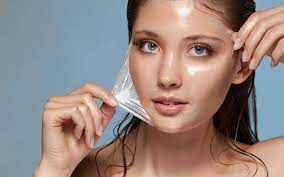
What is chemical peeling?
Chemical peeling is a cosmetic procedure in which chemical solutions are used to exfoliate the superficial layers. The chemical agent penetrates through different skin depths and causes controlled skin injury. It exposes a new layer of skin that is healthier and younger-looking. Glycolic acid, trichloroacetic acid, salicylic acid, lactic acid, and carbolic acid are chemical solutions for a peeling procedure.
The procedure is commonly used for various skin treatments and improves the appearance of the skin. Besides Chemical face peel, peeling can be performed over the neck, hands, underarms, and back. Peeling promotes regeneration and remodelling in the treated area as well as helps in pigment reduction.
Indications of chemical peeling
Pigmentation on face
Dark circles or Under eye pigmentation
Anti-aging treatment for wrinkles, fine lines
Acne or acne scar
Lentigines
Freckles and age spots
Sun-damaged skin
Skin rejuvenation
Types of chemical peels: Depending upon the death of penetration there are 3 types of peels. A dermatologist will determine which type is suitable for treating a skin condition.
Light chemical peel: It is also called a superficial peel and it is a lunchtime procedure. It is helpful to remove the epidermis- the outer layer of the skin. It is used for anti-aging treatment, different types of acne, to improve skin tone, etc. This procedure does not require any downtime and the patient can resume back to work after 15minutes of the procedure.
Healing time is 1 to 7 days until the skin will appear red and then scaling may develop. Scaling can last for 3 to 7 days.
It may take 3 to 5 sessions for desired results. Light chemical peels can be repeated every 2 to 5 weeks.
Medium chemical peel: It is sometimes also referred to as blue peel. A chemical solution is applied with the help of cotton or gauge and the chemical agents penetrate beyond the epidermis. It removes skin cells from the dermis – the middle layers of the skin.
It is effective against acne scars, treatment of wrinkles, and evening out skin tone. With a medium chemical peel, patients take 7 to 14 days for healing and recovery takes up to a month. After treatment skin may appear red and swollen. Skin crusts and peels off within 7 to 14 days. Follow-up visits are required.
Deep chemical peel: A chemical solution penetrates further deep into the skin. A deep chemical peel is effective against deep wrinkles, chronic acne scars, precancerous growths, etc. This type of peeling does not require repeated sessions for desired results.
It may take 14 to 21 days for healing and requires proper dressing. After treatment, the patient should not miss follow-up visits to dermatologists within the first week.
Chemical peeling treatment: Dermatologists will evaluate your skin condition and guide you about the chemical peeling treatment. Before peeling treatment, a skin specialist may ask you to start antiviral medications or use a retinoid cream before treatment which will aid in the healing process.
Chemical peeling is an outpatient procedure. The area under treatment is properly cleaned and hair and eyes are covered with tape, gauze, or Goggles.
Chemical solutions are applied over the treatment area with a brush or cotton ball. The skin will begin to whiten. The patient might feel a stinging sensation after the application of the chemical agents. A neutralising agent is used to eliminate the chemical solution from the treated skin in light chemical peeling.
During a medium peel, the patient may get a hand fan to cool down the skin or cool compresses followed by a soothing lotion. In deep peeling a small part of the skin is treated at a time, to prevent damage to the heart and lungs and after completion surgical dressing is given.
After chemical peeling skin becomes sensitive to the sun, using a broad-spectrum sunscreen with an SPF of more than 30 is mandatory.
While stepping out of the house wearing a hat can prevent you from sun damage.
Contraindications for chemical peel treatment:
Pregnancy
Frequent outbreaks of cold sores
History of oral acne medication- isotretinoin before 6 months of procedure
Family history of scar or keloid formation
Side effects of chemical peeling:
Redness may persist for months
Skin becomes dark temporarily
Lighter skin colour
Scar formation
Infections
Chemical peeling in Yamuna Vihar
At Wellness skin and hair clinic, Chemical peeling is carried out after evaluating the skin condition and after understanding patients’ expectations. Dr. Aggarwal is an eminent dermatologist and provides the best skin treatments. Every skin and hair treatment meets all International safety standards and is USA FDA approved.
We use a holistic approach for every patient and provide a custom-made treatment plan. Our hospital is adept with cutting-edge technology and provides state of an art facilities to patients. Skin treatments are technique sensitive, hence prefer recognized hair clinics and experienced dermatologists.
Cost of Chemical peeling treatment in East Delhi
Chemical peeling treatment costs depend on the type of skin condition, the area to be covered, the use of anaesthesia and the number of sessions. On average each session price is 2500 to 10000 INR in East Delhi.
A light chemical peel renders a uniform skin tone and enhances skin structure. It is a proven anti-aging treatment. If you have further queries about chemical peeling treatment consult our skin and hair expert.